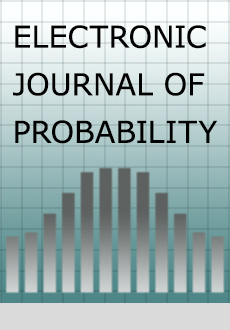Abstract
We consider the stochastic recursion $X_{n+1} = M_{n+1}X_n + Q_{n+1}$ on $\mathbb{R}^d$,
where ($M_n, Q_n$) are i.i.d. random variables such that $Q_n$ are translations, $M_n$ are similarities of the Euclidean space $\mathbb{R}^d$. Under some standard assumptions the sequence $X_n$ converges to a random variable $R$ and the law $\nu$ of $R$ is the unique stationary measure of the process. Moreover,
the weak limit of properly dilated measure $\nu$ exists, defining thus a homogeneous tail measure $\Lambda$. In this paper we study the rate of convergence of dilations of $\nu$ to $\Lambda$
In particular in the one dimensional setting, when $(M_n,Q_n) \in \mathbb{R}^+\times \mathbb{R}$, $\mathbb{E} M_n^{\alpha }=1$ and $X_n\in \mathbb{R}$, the Kesten renewal theorem says that $t^\alpha\mathbb{P}[|R|>t]$ converges to some strictly positive constant $C_+$. Our main result says that $$\big|t^\alpha\mathbb{P}[|R|>t]-C_+\big|\le C (\log t)^{-\sigma},$$ for some $\sigma>0$ and large $t$. It generalizes the previous one by Goldie.
Citation
Dariusz Buraczewski. Ewa Damek. Tomasz Przebinda. "On the rate of convergence in the Kesten renewal theorem." Electron. J. Probab. 20 1 - 35, 2015. https://doi.org/10.1214/EJP.v20-3708
Information





